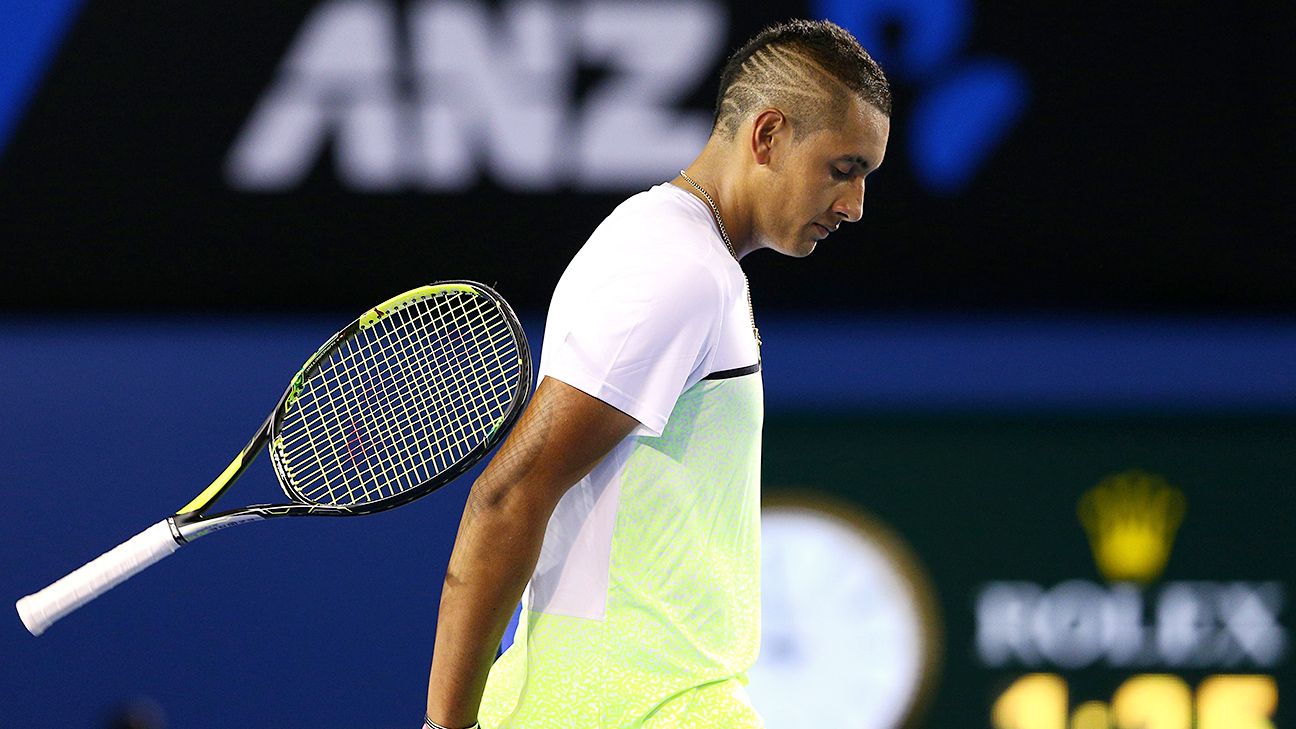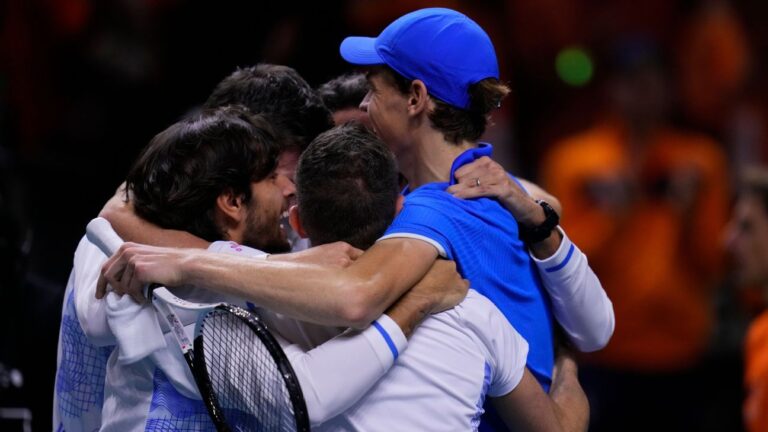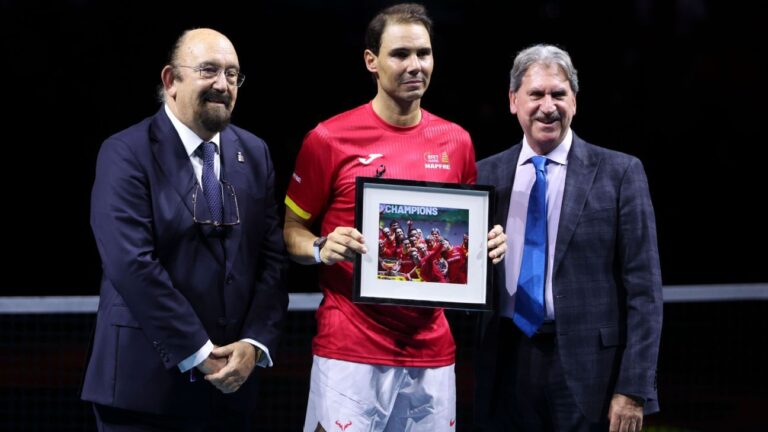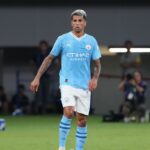There was a time, in the middle of this summer, when Nick Kyrgios was poised to put his vibrant hip-hop stamp on men’s pro tennis.
At Wimbledon, during the All England Club’s first scorching week, talent and luck seemed to align themselves for the tall, 20-year-old Aussie, he of the tinted Mohawk and the lashing serve and the cocksure strut.
Wimbledon was where Kyrgios had announced himself to the world the year before, with his stunning Centre Court upset against Rafael Nadal. True, there’d been tough times since: injuries and bad losses and insouciant jabs at the game that was endowing him with a multimillion-dollar living. “I don’t really like the sport of tennis that much,” he said. “I don’t love it.”
But there was also this year’s Australian Open, where he made it to a second Grand Slam quarterfinal, and there was a second-round victory in Madrid against Roger Federer on dusty clay, along with enough steady unspooling of talent and audacity to mark Kyrgios as a candidate to become the next tennis superstar.
Nick Kyrgios has yet to win a pro title. His biggest Grand Slam success in 2015 was reaching the Aussie Open quarters. Cameron Spencer/Getty Images
Once a promising basketball player, Kyrgios embodies change that could be good for tennis. Despite the overwhelming success of Venus and Serena, tennis remains largely homogenous, and not just racially. Its overall tone is subdued and muted, restrained and reverent. Too often those attributes make it flat-out dull.
The difference between being lively and edgy, and becoming boorish to the point of vulgarity, is a clear and conspicuous distinction that Kyrgios is beginning to have trouble with. And at Wimbledon, having risen in a year from No. 144 in the world rankings to No. 29, the magnetic complexity he brings was on full display.
He padded the grounds with his collar up, his emotions wide to the world, pink headphones clinging to his ears. His brown skin set him apart, and he conducted himself with a me-against-the-world brashness that matched the attitude of the African-American NBA players and rap artists he admires. Straight outta Compton? No. Straight outta Canberra.
It was instructive to watch him on Wimbledon’s practice courts, where he goofed off on hallowed ground — shouting, trying ridiculously chancy shots, then growing suddenly serious as he hit screaming serves and forehands. It was exactly how he behaved during matches. His irreverent, loose-limbed style drew electrified, standing-room crowds, even to mixed doubles.
Despite his brashness, Kyrgios had never won a pro title. But after his third-round match at Wimbledon, in which he dispatched Milos Raonic, a lumbering Canadian considered to have a chance at winning the tournament, it was conceivable that Kyrgios could actually capture his sport’s most treasured trophy.
And yet …
Cracks began to show. In each of his matches, he managed to display prodigal brilliance, and also stir controversy. He barked at linesmen, at umpires, at fans. He slammed a racket that bounced into the stands and landed in the lap of a spectator. At one point, during peak frustration in his fourth-round loss to Richard Gasquet, Kyrgios appeared to give up. He swatted a return into the net. He stood like a statue as a serve whizzed past.
The cracks then turned into canyons. On a tour three decades removed from John McEnroe and Jimmy Connors, being a brat can bring significant risk. The context is different now. This is an era graced by Federer, whose deft sportsmanship has influenced all of the pro game. These days, look-at-me has a short shelf life. Petulance might be tolerated, but only to a point.
About an hour after his Wimbledon loss, Kyrgios sat at an interview podium wearing the downcast but assertively defiant look of a schoolboy who knew he was about to get a grilling. Even in the age of Twitter and Instagram, the mainstream media still largely shapes an athlete’s narrative — and after Kyrgios’ match against Gasquet, reporters were ready to pounce.
“So you’re not denying you stopped for that game?”
“Denying what?”
“You’re denying that you stopped playing that game?”
“I kept playing.”
“For that moment, you weren’t returning.”
“That’s coming from you?” Kyrgios shot back, his tone laced with defensiveness. “That’s your opinion.”
The journalists tensed.
Editor’s Picks
1 Related
“I was going to ask you about the same moment,” another said.
“I am not perfect out there,” Kyrgios said, clearly peeved. “I’m going to have ups and downs. … It takes some serious balls to respond the way I did.”
“Did the crowd misjudge you when they started booing?”
“Yeah, and then I started playing well, and they started cheering. Did you hear that, too?”
“Can you give a proper explanation why you didn’t return those serves? Looked like you were tanking the set.”
“Do you want to try and return Richard Gasquet’s serve? I will give you the racket, and we’ll see how many times you can return his serve.”
“You don’t want to deny it, deny the accusation?”
“Deny what?”
“The accusation being put forward that you didn’t try in that game in the second set. … It looked like you didn’t move.”
“I did move.”
“What do you think of this idea that you’re kind of the bad boy of tennis?”
“Just ’cause I show emotion on the court, I’m bad. So, whatever.”
Nothing has gone well since that day.
Nick Kyrgios reached the fourth round at Wimbledon, a four-set loss against Richard Gasquet that sparked a sometimes heated postmatch exchange with reporters. Ian Walton/Getty Images
The youngest son of a Greek father and Malaysian mother, after his Wimbledon loss, Kyrgios inadvertently found himself in the middle of the heated Australian debate over immigration and identity. One of the nation’s Olympic icons, swimmer Dawn Fraser, said he should return to where his parents came from if he didn’t shape up. Instead of capitalizing on a swell of support in the wake of those remarks, Kyrgios promptly lost a Davis Cup match against a little-known player from Kazakhstan and was benched. Worse than the defeat itself, microphones caught him uttering, “I don’t want to be here” — words taken by many in his home country, owners of a proud Davis Cup tradition, as a sacrilege.
Kyrgios then flew to Montreal, where he faced Stan Wawrinka, the French Open champion. In the now-infamous emasculation that went viral, Kyrgios was overheard on TV telling his opponent, “Kokkinakis [fellow Aussie player Thanasi Kokkinakis] banged your girlfriend. Sorry to tell you that, mate.”
The men’s tour recently added to the $10,000 fine it assessed to Kyrgios because of that comment, essentially putting him on probation for six months, threatening an additional $25,000 levy and a 28-day suspension unless he’s on his best behavior at ATP events.
Federer, Nadal and other top players rushed in to express their deep disappointment with Kyrgios’ behavior in the Wawrinka match.
But nothing in the condemnation would equal the censure from Roy Emerson, now 78, an Aussie great who, with Rod Laver and others, built a gallant tennis legacy Down Under more than 30 years before Kyrgios was born. When I spoke to him recently, Emerson, a 12-time Grand Slam singles champion, said Kyrgios “needs to grow up” and that “he certainly has a swagger that he doesn’t deserve,” since he has yet to even win a tournament.
Asked how the late Harry Hopman — Australian tennis’ John Wooden — would have approached the young talent, Emerson didn’t hesitate. Hopman, he said, would have tossed Kyrgios from the practice courts with a stern warning: “Come back when you want to play tennis. Performing seals are at Sea World. That is where they should be.”
It might be easy to dismiss Emerson’s view as that of an old-school crank. But from all we’re hearing about the mood in today’s pro tennis locker room, his is a line of thinking that holds significant weight.
So now the pressure mounts. It’s easy to imagine a young McEnroe thriving amid this kind of stir. He’d lose his mind on court, baiting and challenging anyone in spitting distance, and then reel off titles at three tournaments in a row. Kyrgios, though, for all his self-professed self-assurance, seems uneasy wearing that hat, even flummoxed about why he’s being criticized. After beating Wawrinka, he lost his next match amid a chorus of boos. Then it was off to Cincinnati, where Gasquet thrashed him 6-2, 6-1.
Is the pressure just too much? There’s the six-month probation. Can he play tennis that long without flashing his trademark surliness? Will he turn around his fortunes, marshaling his prodigious skills enough to triumph in a breakthrough at the US Open, starting with a first-round match Tuesday against Andy Murray?
Right now only one thing is for sure: What had looked like the season in which Nick Kyrgios would stamp himself on tennis has become a long, hot summer of doubt.
Kurt Streeter is a senior writer for ESPN The Magazine. He recently came to ESPN after 15 years at the Los Angeles Times. Follow him on Twitter: @kurtstreeter.







